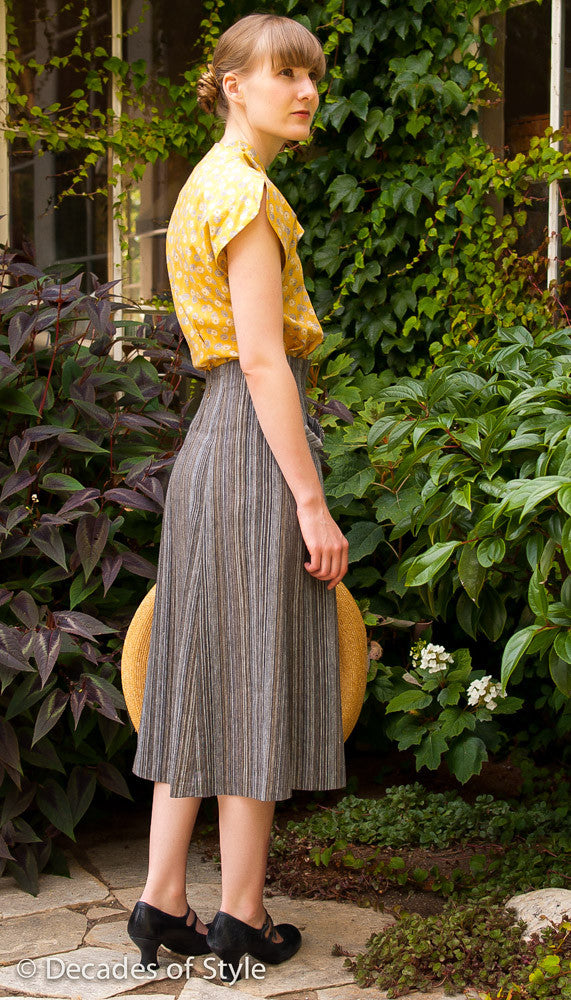Vintage Elegance: How to Style a 1950s Skirt for Modern Chic Looks
Embracing the timeless charm of a 1950s skirt isn’t just about nostalgia; it’s a deliberate choice to infuse modern wardrobes with structured elegance and playful femininity. This piece explores how to seamlessly blend vintage aesthetics with contemporary trends, offering practical styling insights that honor the past while embracing the present.
The Enduring Appeal of the 1950s Silhouette
The 1950s skirt, characterized by its full cuts, nipped waists, and vibrant patterns, emerged as a symbol of post-war optimism and feminine expression. According to the Fashion Institute of Technology, this era celebrated hourglass figures through designs that emphasized small waists and flared hips, a stark contrast to the utilitarian styles of the 1940s. Icons like Audrey Hepburn and Marilyn Monroe popularized these skirts in films such as “Roman Holiday” and “The Seven Year Itch,” embedding them in cultural memory. Today, this silhouette resonates because it offers a counterbalance to minimalist modern fashion, allowing wearers to make bold statements without sacrificing comfort. The circle skirt, a quintessential example, uses geometric cutting techniques to create fluid movement, a feature praised in historical costuming literature from universities like NYU. By understanding its origins, we can appreciate why the 1950s skirt remains a versatile foundation for chic, personalized outfits that defy fleeting trends.

Key Elements of a 1950s Skirt Explained
To style a 1950s skirt effectively, it’s crucial to recognize its defining features. The A-line and circle cuts are engineered to flare out from the waist, creating volume that flatters various body types. As noted in Wikipedia’s entry on 1950s fashion, these designs often incorporated fabrics like cotton, taffeta, or wool, chosen for their durability and ability to hold shapes. Dior’s “New Look,” introduced in 1947, heavily influenced this trend by championing full skirts that used significant yardage—a departure from wartime fabric rationing. Scientifically, the distribution of fabric in a circle skirt follows a radial pattern, which maximizes swing and visual impact, a concept detailed in textile studies from authoritative sources like the Cornell University College of Human Ecology. Additionally, details such as petticoats for added fullness and bold prints like polka dots or florals were staples, reflecting the era’s embrace of exuberance. When you select a 1950s skirt, you’re not just choosing a garment; you’re adopting a piece of design history that combines artistry with ergonomic structure.
Modern Pairings: Blending Vintage with Contemporary
Integrating a 1950s skirt into today’s wardrobe involves strategic pairings that highlight its elegance while keeping the look fresh. Start with footwear: swap classic heels for sleek ankle boots or minimalist sneakers to ground the outfit in modernity. As fashion influencer Alexa Chung once remarked on Twitter, “Vintage pieces feel current when contrasted with something undone—like a structured skirt with a casual tee.” Layering is key; try a fitted turtleneck or a cropped leather jacket to balance the skirt’s volume. Accessories should bridge eras—think delicate gold necklaces instead of chunky pearls, or a structured crossbody bag in lieu of a vintage clutch. From a color theory perspective, pairing a vibrant skirt with neutral tops creates visual harmony, a technique endorsed by Pantone’s seasonal reports. This approach not only honors the skirt’s heritage but also allows for personal expression, proving that vintage elements can anchor a dynamic, everyday style.

Seasonal Adaptations for Year-Round Wear
A common misconception is that 1950s skirts are suited only for warm weather, but with thoughtful adaptations, they can transcend seasons. In colder months, layer thick tights or leggings underneath for warmth without compromising the silhouette. Top the skirt with a chunky knit sweater, ensuring it’s tucked or belted to maintain the defined waistline—a trick often highlighted in styling guides from Vogue. For rainy days, a tailored trench coat adds sophistication while protecting the fabric. In summer, lightweight versions in cotton or linen paired with sandals and a straw hat evoke a breezy, retro vibe. Historical accounts from the Metropolitan Museum of Art’s costume collection show that 1950s designs were adaptable, with winter versions in heavier wools and summer ones in airy chiffons. By rotating fabrics and layers, you extend the skirt’s utility, making it a cost-effective staple that offers endless versatility across climates.

Where to Find Authentic and Affordable Options
Sourcing a quality 1950s skirt doesn’t require a fortune; it’s about knowing where to look. Vintage stores and online marketplaces like Etsy often carry original pieces, but for durability, consider reproductions from brands like Vivien of Holloway or Decades of Style, which use period-accurate patterns. During sales events, these retailers may offer discounts of 20-30%, making high-quality replicas more accessible. As emphasized in Quora discussions among vintage enthusiasts, inspecting seams and fabric composition is essential to avoid fast-fashion imitations that lack authenticity. Additionally, thrifting platforms like Depop can yield unique finds at reduced prices, especially if you’re patient. From an economic standpoint, investing in a well-made skirt—whether vintage or reproduction—proves cost-effective over time due to its timeless appeal and durable construction, a principle supported by consumer reports on sustainable fashion.
Ultimately, the 1950s skirt serves as a bridge between eras, offering a canvas for creativity that enriches modern style with historical depth. By mastering its elements and pairings, you craft a wardrobe that is both distinctive and enduring.







